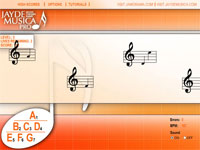Learn To Play Piano Chords: Learn To Play II-V-I Progressions
>> Dont Even Think Of Trying Other Prodicts untill You Read This <<
II-V-I progressions are common in most types of popular music and mainstream jazz and more. If you can play II-V-I progressions you are in a lucky position. What then is a II-V-I progression? Well, come and see!
A C-major scale consists of seven notes: C D E F G A B
A C-major chord consists of the first, third and fifth notes in the C-major scale. This is called a triad.
A chord built from the first step of the scale can also be called I from the roman number one.
If I start on the second note of the C-major scale and construct a triad chord consisting of D F A, I have a chord built upon the second step of the scale.
This will be a D-minor chord and I can indicate that I have built a chord from the second note of the C-major scale by giving it the number II with roman numbers.
If I decide to build a triad chord from the fifth note of the C-major scale I have to add more notes in the C-major scale: C D E F G A B C D
If I start building a triad from G it will consist of the notes G B D. This is a G-major chord and to show that it is a triad built from the fifth step of the C-major scale we can call it V which is the roman number for five.
The smart thing with the roman numbers is that they don't indicate an absolute chord but rather the position of a chord in the key you are playing on your guitar, piano or other instrument.
In the key of C the roman numbers I stands for the chord C, II indicates the chord D-minor and V the chord G. Simplified we can say that when I say I will play a II-V-I chord progression in the key of C I will play the chords D-minor, G and C.
Actually this is just the beginning of the art of playing II-V-I progressions. You can spice the chords in different ways and play the chords in major or minor.
And of course a chord on a piano can be played in many different ways. A C-major chord must have the notes C, E and G but how many or where to play them is a matter of choice.
Here are a few easy examples of II-V-I progressions in C-major that can be transposed to other keys:
1. Dm, G7, C 2. Dm7, G7, C 3. D7, G7, C
When you practice these progressions on your piano you can choose to play them with both hands, with the left hand, giving room for right hand improvisation or your right hand, giving room for left hand bass playing or improvisation.
Practicing playing II-V-I progressions on your piano will help you see the relationship between chords and being able to play these progressions in different key will give you a tool that will help you recognize chord progressions in songs you hear which will help you trancribe songs by ear.
Peter Edvinsson is a musician, composer and music teacher. Visit his site Capotasto Music and download your free sheet music and learn to play piano resources at http://www.capotastomusic.com
Labels: child_learn_piano_play, free_learn_lesson_online_piano_piano_play

